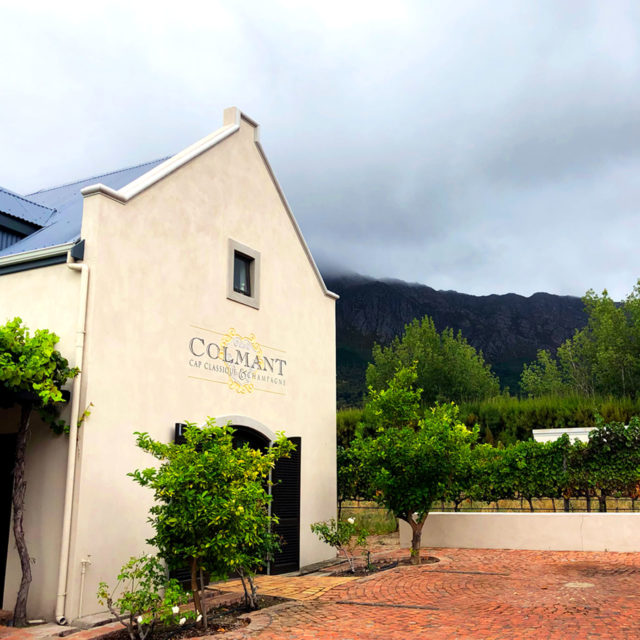When you take your first wine-focused trip to South Africa, some things are expected. Lots of Chenin Blanc? Of course. Balanced Cabernet Sauvignons that present strong quality-to-price-ratios? Check. An industry that puts in a lot of work to move forward, but remains inseparable from the country’s decades of apartheid-defined racism? Yes, a complicated situation, with many hopeful stories.
How about impressive, well-priced, traditional-method sparklers? Surprisingly, yes! These wines are among the South African wine industry’s best, least-promoted bottles.
Among South African sparkling wines, the ones you want to look for are labeled Methode Cap Classique (MCC). A note of caution: The majority of sparkling wine made in the country is cheap tank-fermented or carbon dioxide-injected. These wines are rarely worth seeking out. MCCs, on the other hand, are made in the traditional method — in-bottle secondary fermentation — with many of the best examples focusing on traditional Champagne varieties.
Regulations require whole-cluster fermentation and nine months of fermentation on the lees, which is expected to increase to 12 months in 2020. MCCs follow the standard OIV labeling scheme for residual sugar, with bruts maxing out at 15 grams per liter (g/l) of residual sugar, extra brut at 5 g/l, and brut nature at 3 g/l.
All grapes are permitted, though many of the best producers focus on the traditional Champagne varieties of Chardonnay and Pinot Noir, and a smaller number also work with Pinot Meunier. At a recent five-flight, two-dozen-plus bottle tasting at Colmant, a premier MCC-only producer, Chenin Blanc showed up in a few generally enjoyable bottles, but the vast majority of the wines stuck to Chardonnay and Pinot Noir. In fact, many of the top bottles were blanc de blancs, notably those from Cederberg (2013), Colmant (NV) and Graham Beck (2009).
The consensus history is that Frans Malan’s Simonsig Wine Estate produced the first South African sparkler in the traditional method in 1971. Simonsig’s early wines used Pinot Noir as well as major South African varieties Pinotage and Chenin Blanc. By the end of the decade there was solid momentum, and more producers joined the fray. Jump forward to 1992, when the Cap Classique Producers Association (CCPA) launched in the wake of the end of Apartheid, marking the decline of the 1918 Koöperatieve Wijnbouwers Vereniging van Zuid-Afrika Bpkt (KWV), the national industry-dominating cooperative.
Today the CCPA boasts over 80 members. Another 150 or so wineries also produce MCCs. Production continues to grow, doubling roughly every five years. Some 20 percent of the estimated 8 million bottles of South Africa’s annual MCC production is exported to foreign markets. MCCs can be tough to find in the United States, particularly on the West Coast; the U.S. receives only around 320,000 bottlers per year, giving you one more excuse to plan a trip to South Africa.
Standout producers include Graham Beck, Colmant, Le Lude, and Charles Fox. Simonsig, the winery that started it all in South Africa, also makes a number of quality MCCs. The blanc de blancs are some of the best examples of what MCC can achieve, particularly the Cederberg Blanc de Blancs Brut (2013), produced from vines planted at 3,100 meters (nearly 2 miles). Although you’ll have to head to South Africa to enjoy it, you’ll pay less than $20 U.S. for a bottle, a phenomenal value.
Although there are nearly 250 MCC producers, the industry is quite concentrated. Seven of the largest producers dominate around the $10 price point, accounting for over 80 percent of total volume. As you move up the price ladder to $20, just a handful of boutique wineries see production in the tens of thousands of bottles annually.
It’s impossible to separate the caliber of these wines from their prices. At less than $30, and often under $20 (or the U.S. dollar equivalent), you’re getting Champagne style at Prosecco prices. The quality-to-price ratios of the best of these wines are undeniable, even more so than that of their Stellenbosch Cabernet compatriots. While you might see single-site bottlings, particularly in prestige cuvees, most MCCs rely on grapes sourced throughout the broad Western Cape wine region.
Graham Beck, an MCC-focused producer whose wines are by far the easiest to locate in the United States, made a small splash back in 2007. On the night Barack Obama announced his run for the presidency, he and his wife Michelle toasted the campaign’s launch with a bottle of Graham Beck Brut NV. The wine, also served at Nelson Mandela’s inauguration in 1994, had been recommended by the restaurant’s sommelier. Impressed by the wine, freshly minted President-elect Obama popped six bottles of the Graham Beck on the night of his first election victory. It wasn’t a surprise, exactly, but it certainly upset the status quo.
MCCs To Try
In the U.S. Market
- Colmant Brut Chardonnay NV
- Colmant Cap Classique Brut Reserve NV
- Graham Beck Brut Rosé
- Simonsig Kaapse Vonkel Methode Cap Classique Brut
When In South Africa
- Claudia Brut 2012
- Cederberg Brut Blanc de Blanc 2013
- Charles Fox Cipher 2012
